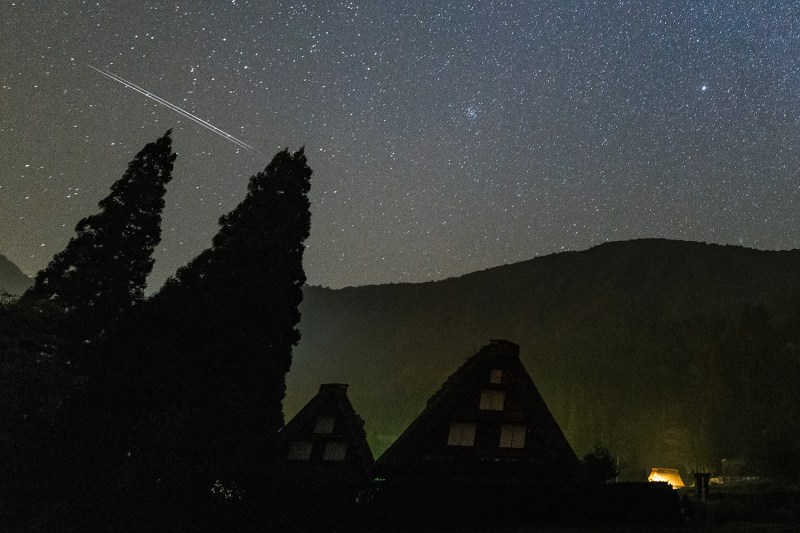
For the luckiest stargazers, spotting Halley’s Comet is but a twice-in-a-lifetime event. Cosmic remnants of Earth’s most famous comet linger long after it’s passed our planet, however. The best evidence for this can be seen every fall in the Orionid Meteor Shower. This, arguably the most spectacular shower each year, is happening right now.
What Is the Orionid Meteor Shower?
As they travel our solar system, passing comets leave massive amounts of space debris known as meteors in their wake. When those cosmic bits collide with Earth’s atmosphere, they burn up as meteoroids. For the Orionid Meteor Shower, the source of this debris is the tail of Halley’s Comet. These “shooting stars,” as they’re commonly known, typically flash and burn out in less than a second. When hundreds or thousands of these bits slam into the atmosphere within a short period, it results in a stunning astronomical display. The Orionids are often the most dazzling shooting star show every year.
What Makes the Orionid Meteor Shower Special?
Meteor showers happen throughout the year. Astronomically speaking, they’re hardly rare. What sets the Orionid Meteor Shower apart is its brilliance. At its peak, skywatchers can expect to see up to 20 shooting stars each hour. By the numbers, it’s not the strongest show of the year, but it’s often the most impressive. The speed of the Orionids, around 41 miles per second, can cause them to break up and leave persistent trails in their wake. These streaks of ionized gas can remain for a few seconds, creating an amazing and photogenic “star” show.
Where Can I See It?
Finding the most brilliant meteor showers like the Orionid isn’t hard. The sheer number of meteors on display makes it easy to spot against the night sky. Knowing the shower’s “radiant point” — the point in the sky from which the meteors originate — can help, however. For the Orionids, that point is just above Orion’s head near Collinder 69. To find it, locate Orion’s Belt then find the bright red supergiant star Betelgeuse nearby. A free mobile app like SkyView Lite can help (available for iOS and Andriod). Geographically speaking, it’s best to find the darkest skies with the least light pollution in your area.
When Is the Orionid Meteor Shower?
The exact dates change each year, although the shower typically occurs between the first weeks of October and November. For 2019, the Orionid Meteor Shower takes place from October 2 through November 7. Sadly, this year’s peak has already passed. However, as one of the best showers of the year, it’s expected to continue a brilliant display for another week.
For more astronomic, bucket list inspiration, check out the best places to catch the Northern Lights.


